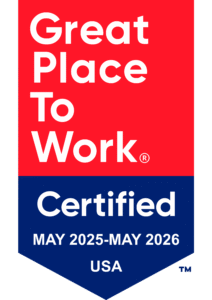Itchy eyes, runny nose, sneezing, fatigue…. These are just a few of the signs of seasonal allergies—also known as hay fever. And get ready: It looks like we may have a real doozy of an allergy season this year. Milder winter temperatures in places can cause plants to pollinate early. And a rainier spring leads to quick plant growth, as well as an increase in mold.
Allergic reactions mostly occur when your body responds to a “false alarm.” And, as you well know, there isn’t a cure for seasonal allergies. But there’s no reason to let this time of year take all the spring out of your step! Arm yourself with information.
Monitor climate factors. When checking the weather and planning your day, keep these things in mind:
- Heat and high humidity promote the growth of molds.
- Cool nights and warm days allow tree, grass, and ragweed pollens to thrive.
- In spring and summer, tree and grass pollen levels tend to peak in the evening.
- In late summer and early fall, ragweed pollen levels tend to peak in the morning.
- Windy and warm days often result in surging pollen counts.
- After a rainfall, pollen counts may go up, even though the rain temporarily washes pollen away.
Avoid your triggers. If allergies are making you miserable, you may want to see an allergist. Specializing in allergies, this person can help you figure out what triggers your symptoms. Then you can find ways to cut off those triggers at the pass. During allergy season:
- Keep windows and doors shut in your car and home.
- Monitor pollen and mold counts daily. Weather reporters often provide this information.
- After working or playing outdoors, take a shower, wash your hair, and change your clothes.
- When doing chores outside, wear a NIOSH-rated filter mask. Better yet? Delegate!
- Be on the lookout for mold, which can build up in moist months. A deep spring cleaning will help get rid of mold and other allergens. Cleanliness may not be close to godliness. But it sure may help you feel better.
- Clear the air with a HEPA room air cleaner rated with a Clean Air Delivery Rate (CADR). If you have central air, use air filters with a MERV rating of 11 or 12. Change air filters every three months.
Relieve your symptoms. Corticosteroid nasal sprays, decongestants, antihistamines. These are examples of over-the-counter drugs that can help relieve your symptoms. Come talk to me to make sure you’re using them the right way. If side effects are a problem, we can work together to come up with a solution. For example, a few possible side effects of antihistamines are sleepiness, dry mouth, constipation, and light-headedness.
For some people, allergies can lead to or coexist with other health problems such as asthma or sinusitis. Asthma narrows or blocks the airways. Sinusitis is caused by inflammation or infection of cavities behind the nose. Just one more reason why working with your doctor and me is a good idea.
Nothing herein constitutes medical advice, diagnosis or treatment, or is a substitute for professional advice. You should always seek the advice of your physician or other medical professional if you have questions or concerns about a medical condition.
